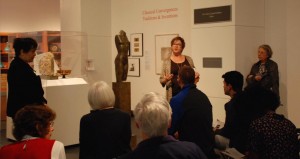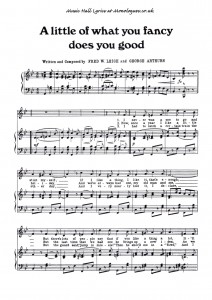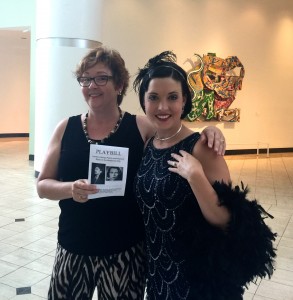Museum Pedagogy: Musings at the Harn

Gallery Talk with Anita Huffington’s bronze Kore (1991) in the foreground. Gift of Dr. and Mrs. David A. Cofrin
The Harn Museum of Art, located here at UF, is celebrating its 25th anniversary this year. So I’ve been musing on how the Harn has inspired my recent teaching. Although I offer courses in literary studies rather than art or art history, the museum is now a vital resource for my classroom and community teaching. The Harn makes things happen with art. If you’re in the area, consider creating a Harn happening of your own.
Responding
From Classical temples to modern museums, our encounters with artworks in public spaces can be intimate, intellectual, spiritual, and creative. We may no longer believe that gods and goddesses inhabit their ancient statues, yet we can still succumb to being dazzled by art–as poet Rainer Maria Rilke was by his Archaic Torso of Apollo. At this year’s “Mighty Aphrodites” talk pictured above, Mary Ann Eaverly and I discussed poems about artworks that depict the Greek goddess of love, beauty, and sexuality (Aphrodite was Venus to the Romans). Emma Lazarus’s sonnet “Venus of the Louvre” distills and dramatizes her museum visit in the late 1880s, when she was entering what would be her final illness. In a sense, she acts as a curator exhibiting one of the world’s most famous statues. Breathing life into the Venus de Milo, her poem lays claim to the Classical tradition as a Jewish-American woman who mourns “for vanished Hellas and Hebraic pain.” The poem’s speaker weeps before the marble statue with dazzled eyes, rendering an aesthetic bliss that is also personal and spiritual. This gallery talk coincided with the exhibition Professor Eaverly and I designed with Harn curator Carol McCusker, “Classical Convergences: Traditions & Inventions.”
Curating
Co-curating a small gallery gave me new possibilities for class assignments–and a new understanding of form. Professor Eaverly and I integrated our “Classical Convergences” exhibition with our recent course on women writers and Classical myth. Our first assignment had students compare two artworks and a poem about either Aphrodite or Persephone, assessing which representation proved most successful in reinventing the ancient figure for contemporary audiences. (Demeter’s daughter, Persephone is also called Kore or Proserpina.) Our final assignment invited students to curate their own gallery on women and myth, creating a pinterest board that included one artwork from “Classical Convergences.” Jordan Bernas gave permission to share this link to her virtual gallery of images, which includes Jiri Anderle’s Cassandra (1984) from the Harn (gift of Melvin and Lorna Rubin).
Curating is a flexible means of approaching, organizing, and interpreting. It opens pathways for viewers to encounter artworks without imposing a rigid route down a one-way street. I find myself using more museum metaphors when I talk to students about their writing. Can you walk around your examples and decide the best way to display them? What do you want your readers to walk away with after your analysis? How much space should each example have in your gallery?
Performing
Like most museums, the Harn is a vibrant space for creative performance, including poetry readings, music, and dance. I emceed a gallery revue of musicians to complement the traveling exhibit “Hoppé Portraits: Society, Studio and Street.” A singer and I performed poems by two writers Hoppé photographed (Ezra Pound and Vita Sackville-West), and the musicians performed popular music from the time period Hoppé worked in London. Soprano Caitlin Pearse recreated signature songs by the Queen of London’s music halls, the fabulous Marie Lloyd (with Thomas Royal on keyboard).
 T. S. Eliot considered Lloyd an artistic genius and admired her attuned rapport with her audience. Bringing the vernacular rhythms of music hall to the museum’s main gallery complemented Hoppé’s street photography. We also offered jazz songs by London favorites Duke Ellington and Louis Armstrong, highlighting the city’s cosmopolitan culture. Baritone Tony Canty performed these pieces with Royal (and Nick Pierce on bass). The gallery’s reverberant space and array of period photographs brought modernist London to life.
T. S. Eliot considered Lloyd an artistic genius and admired her attuned rapport with her audience. Bringing the vernacular rhythms of music hall to the museum’s main gallery complemented Hoppé’s street photography. We also offered jazz songs by London favorites Duke Ellington and Louis Armstrong, highlighting the city’s cosmopolitan culture. Baritone Tony Canty performed these pieces with Royal (and Nick Pierce on bass). The gallery’s reverberant space and array of period photographs brought modernist London to life.
There is always a performative dimension to our museum-going. We create a personal choreography when we walk through museums. We enter the galleries in the order we like, moving in the directions we prefer. We block our own sight lines with each artwork we encounter, experimenting with angle and distance. We pause as we see fit. The postures and expressions we assume may be unconscious or deliberate, momentary or sustained. These individual performances and encounters generate our responses in gallery comment books, class assignments, creative writing, drawings, posts, and artful conversations. –MB


Comments are currently closed.